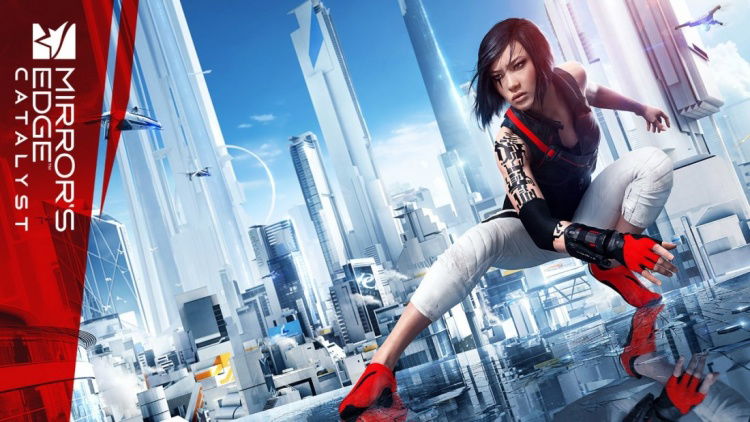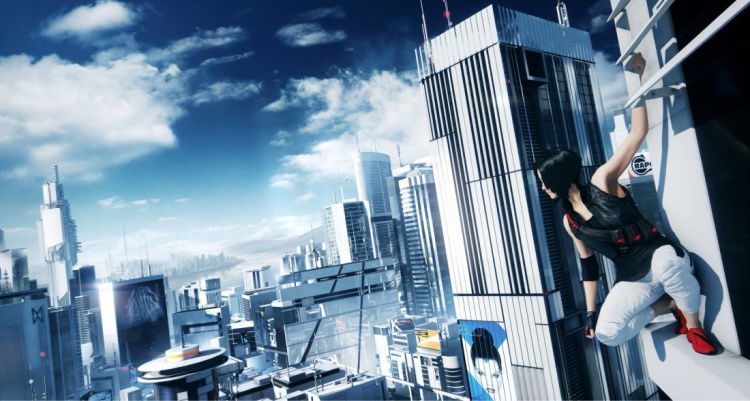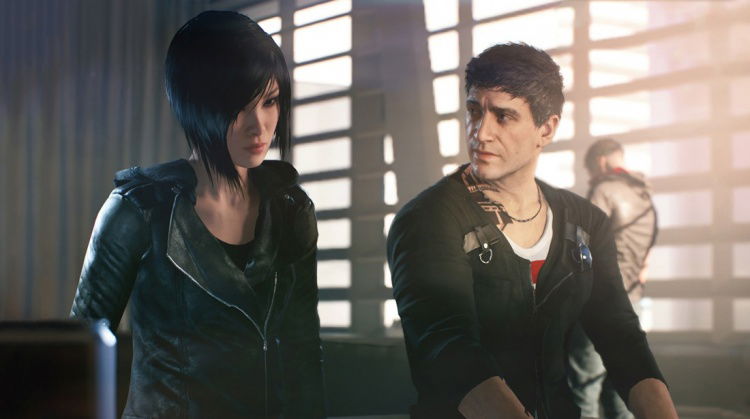If it’s possible to remember videogames in relation to the time in which they were produced, then the original 2008 title Mirror’s Edge is something of a masterpiece. It introduced a mechanic to the world we’d never seen in a game before; it felt like rediscovering the first-person shooter or the puzzle platformer. Parkour had never been shown to gamers in such a way – clean, fast, immersive, delicious. It was my game of the year and (fun fact folks!) was the first review I’d ever written as a hobbyist critic. I remember distinctly missing one New Years’ Eve to spend an entire night playing Mirror’s Edge time trials with three good friends, something at the time I was embarrassed to admit but now looking back – were some of the best memories I’ve ever had with a game.
Game Name: Mirror’s Edge: Catalyst
Platform(s): PlayStation 4, Xbox One, Microsoft Windows
Publisher(s): EA
Developer(s): Dice
Release Date: 07/06/2016
Price:$57.99/£39.99
When Mirror’s Edge: Catalyst was announced I wasn’t the least bit nervous. In fact, every peek of gameplay looked fresh and tantalizing and Dice was proudly behind the wheel again after several red lights in production; every gear was in motion to deliver another modern masterpiece. I couldn’t wait to play my new game of the year… or so I thought. It took little over fifteen minutes for my heart to sink deeply into my chest; my memories of the good times evaporating in my mind like nostalgia Alzheimer’s. Faith was back but she wasn’t the same, not quite.
Mirror’s Edge: Catalyst is an unnecessary origin tale that depicts the events that precede Mirror’s Edge. Faith Connors has just left juvenile detention and through a series of friend and family related incidents, finds herself up against the City of Glass’ main antagonists, Kruger Sec. The city remains as it was in the original game, beautifully dystopian – tragically Orwellian, however, this time the levels are less linear and the city becomes an open-world plaything. Funnily enough, herein lies the fundamental problem I have with Catalyst.
Despite the generally favourable opinions people have of open world games, the truly successful ones are the ones where the gameplay complements the environment. Grand Theft Auto’s third person freedom makes you feel like an individual in an enormous city, Fallout’s FPS antics have been refined to deliver an unforgettable sci-fi experience and despite having wobbly pacing, 2011’s L.A Noire delivers both an open world adventure and a cinematic narrative coherently in one playthrough. At no point playing those games did I feel the gameplay was jarring with the surroundings. The original Mirror’s Edge worked perfectly on the sense that the levels were methodically planned by ingenious level designers – flawlessly weighted to offer the freedom you needed to complete the game your own way or to rattle through with the elegance of choreography. Once you take away that linearity you surprisingly take away the beating heart of the game.
The open world Dice have delivered here is intrinsically flawed; beautiful, yet flawed. The draw distance is huge and the City of Glass is a mammoth spectacle to behold – standing tall like BioShock Infinite’s city in the clouds. But it doesn’t work on a parkour element. Not at all.
The beauty of free flowing running is that you’re able to predict each move and preempt how you’re going to pull it off; you’re unable to do that on a massive map of which you have no control over or knowledge of. It doesn’t help that some of the skyscrapers are occasionally buggy and the drops between jumps are too unpredictable. It becomes difficult to predict how far you can leap, with seemingly close targets suddenly feeling miles away once you take that initial jump. Often I found myself holding onto levels of buildings I had no intention of being on just because I missed a jump. It was at those points there was nothing else I could do but jump off and plummet to my death to reset my position.
Catalyst only works when it involves you in some predesigned arenas; areas in which you can get your running speed up to maximum and find yourself ducking/weaving around obstacles with adrenaline and ease. These moments feel reminiscent of the original but they’ve regularly broken apart by frustrating open world sections or lazily designed combat. Here, combat essentially resigns your opponents (of varying skill and health) to being crash dummies for you to kick into each other or over railings. It’s clumsy, very rudimental and probably shouldn’t have been included in the game (what with the combat being the main issue with the first game n’all).
I actually have no problem with the fact that the characters in the game all feel off and that Faith’s arc isn’t very clear from a narrative perspective. I’m used to playing games where redundant characters whether inane garbage into your ears while you actually try and progress through a level. Here, Dice has tried to tell a story and I commend them for adding that element into proceedings. A lot of my key issues stem from the open world map designed so loosely and with far too many falls that it becomes a nightmare to actually stay ‘in the lines’.
Controls wise you never really feel comfortable with the game – the first person perspective often distorting how you feel you are in relation to your environment. During some great gameplay moments you’ll face long walls head on expecting to wall run in across them in a direction – only to find you smack straight into it or pathetically claw up it until you slide back down, ruining any sense of momentum. Likewise, the slide (LT) mechanic and vaulting mechanics don’t feel as fluid as they did in the original game; it’s hard to describe but there’s this offbeat that occurs no matter how fast you’re running. Once you slide or vault, Faith will take about 20 frames to regain her speed again – essentially causing a freeze frame effect that prevents you from ever blurting out ‘aweeeeesome!’ in a frenzy of adrenaline fuelled gameplay where you’re chaining movements like a crazy Tekken takedown.
It must be said the game is good-looking, it does the basics right although it doesn’t improve drastically on the original; you won’t encounter impressive locations until the latter stages that take place high above the city. The online time-trial mechanic works well and the hidden collectables throughout the city provide longevity if that’s your sort of thing – however, the main issue I have with the game is just the sheer amount of wasted potential it has. Dice cooked up a winning formula with the original Mirror’s Edge but tried too hard here to cram it into an expansive open world. The soundtrack also struggles to come close to the original – with the iconic pulsating beats occurring occasionally but with a real absence of the beauty that was the original theme song ‘Still Alive’.
Mirror’s Edge: Catalyst is less ‘Still Alive’ than it is ‘barely breathing’, yet it retains a special place in my heart as a game that tried to offer gamers something a little bit different to the norm. Ultimately it’s a failure, a broken game with repetitive action and a mechanic that lends itself far better to arcade like linearity rather than open world botch-jobbery. An admirable failure, but one that’s left a huge cloud over this poor reviewers’ head. I can only hope we eventually get the sequel we deserve that’s tight, addictive and stunning. I know you’ve got it in you, Dice.
Overall
Overall Mirror’s Edge: Catalyst has to go down as something of a disappointment. It tries to do so many things to reinvent the genre but it lacks the killer impact the original had back in 2008. Perhaps I’ll go back to it in a few months and discover I was being too harsh on it, yet I only criticize it out of respect for Dice and a genuine love for the universe they created. Catalyst is still a hell of a lot better than a lot of games out there at the moment; it just lacks the wow factor I was looking for. Fingers crossed we get one more game to win us over.
-
A leap of faith too many?





